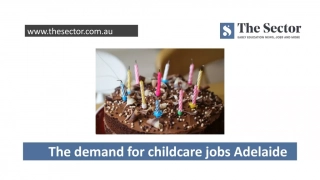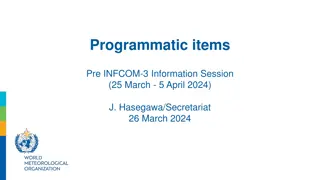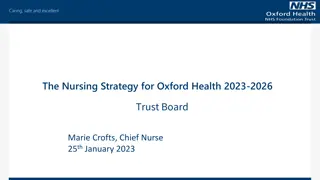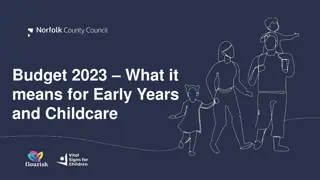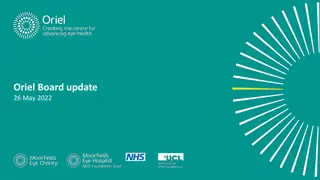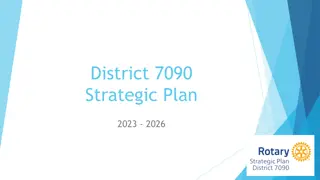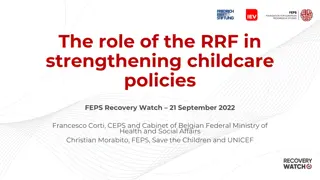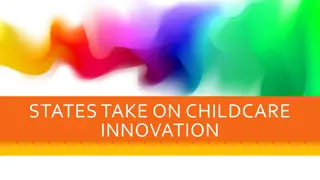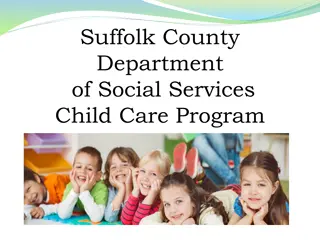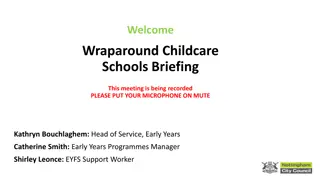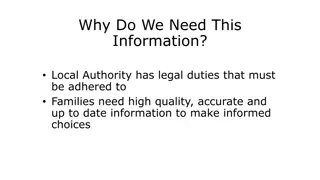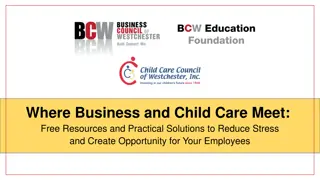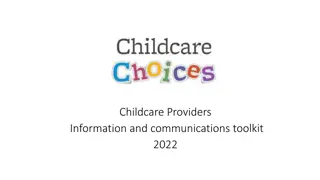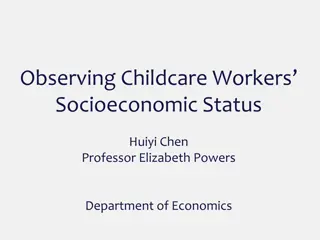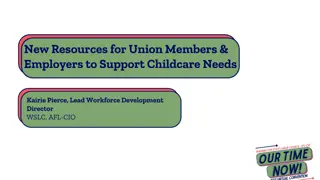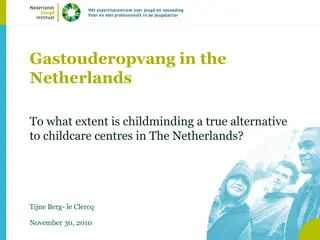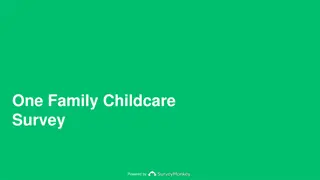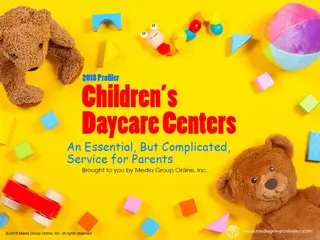National Wraparound Childcare programme 2023-2026
The National Wraparound Childcare Programme 2023-2026 aims to enhance childcare provisions for working parents through key reforms, milestones, and funding updates. It introduces extended entitlements for children aged nine months to primary school age, with a focus on supporting primary schools in offering wraparound care. The programme also includes adjustments to staff ratios and financial support for childminders. Expectations for increased funding rates and consultation on Early Years outcomes implementation are highlighted, reflecting a comprehensive approach to improving childcare services.
Download Presentation

Please find below an Image/Link to download the presentation.
The content on the website is provided AS IS for your information and personal use only. It may not be sold, licensed, or shared on other websites without obtaining consent from the author.If you encounter any issues during the download, it is possible that the publisher has removed the file from their server.
You are allowed to download the files provided on this website for personal or commercial use, subject to the condition that they are used lawfully. All files are the property of their respective owners.
The content on the website is provided AS IS for your information and personal use only. It may not be sold, licensed, or shared on other websites without obtaining consent from the author.
E N D
Presentation Transcript
National Wraparound Childcare programme 2023-2026 Introduction November 2023 Leah Forgacz-Cooper: Early Years Project Manager. Families Information Service Email:forgaczcooperl@ealing.gov.uk CHILDREN S & ADULTS SERVICES
Contents 1. Overview of childcare reforms Page 2 2. Childcare reforms- Key areas of change, milestones & timeline Page 2 3. Wraparound Childcare programme-Key areas of change, milestones & timeline What is the ambition of the National Wraparound Childcare Programme? In the context of this programme, what is meant by wraparound childcare ? What is the vision of the National Wraparound Childcare Programme? Page 4 4 Page 5 5. Page 5 6. Page 6 7. Types of provision and delivery models Page 7 8. SEND & Special Schools Page 8 9. Funding update Page 8 10. What the grant can be used for Page 9 11. What the grant cannot be used for Page 10 How do I activate my Tax-Free Childcare account? 12. Page 11 13. Key Contact List Page 12 1
2. Childcare reforms- Key areas of change, milestones & timeline Sept 2023 Nov 23-March 2024 April 2024 June 2024 Sept 2024 Sept 2025 Sept 2026 Areas of change 1. Currently, parents who work more than 16 hours a week and earn less than 100,000 are entitled to 30hours free childcare a week for children aged three to four. Programme Launch 15hrs pw for 38 weeks, for eligible working parents of 2- year-olds introduced Programme Launch 15hrs pw for 38 weeks for eligible working parents of children 9 months plus introduced Programme Launch 30hrs pw for 38 weeks for eligible working parents of children from 9 months to primary school age introduced Extending early entitlements for working parents 2. Local authorities expected to start planning and preparation for rollout of national programme DfE publishes guidance for schools LA information sessions LA to submit completed supply & demand mapping data to DfE Deadline for LAs to submit delivery plan for programme funding to DfE SLAs, including monitoring agreements constructed and agreed between Schools/ Providers & LA & Grants distributed Programme Launch National wraparound financial support to primary schools begins for two academic years National wraparound financial support to primary schools continues Wraparound financial support finishes in April 2026 All schools able to offer 8am-6pm wraparound on their own or in partnership Wrap around childcare programme E.g. Breakfast & Afterschool clubs- 8am-6pm EY Supplementary Grant A one-off EY supplementary grant for the period September 23-March 24 for 3/4yo and 2yo places Expected increased funding rates Expecting an increase in 3/4yo & 2yo funding rate Childminder grants Childminder grants become available on 30/11/23 Families on Universal income Will pay childcare support up-front Change in staff ratios (optional) Changes to ratios for 2yr olds 1:4-1:5. Consultation response for EYFS & implementation of outcomes January 2024 3 New Provider specific EYFS Frameworks Clarifying term adequate supervision while children eating
3. Wraparound Programme- Key areas of change, milestones & timeline Nov/Dec 2023 March 2024 Sept 2026 Jan 2024 June 2024 Sept 2024 Sept 2025 Local authorities expected to start planning and preparation for rollout of national programme DfE publishes guidance for schools LAS to submit completed supply & demand mapping data to DfE Deadline for LAs to submit delivery plan for programme funding to DfE Programme launch National wraparound financial support to primary schools continues Wraparound financial support finishes in April 2026 National wraparound financial support to primary schools begins for two academic years LA information sessions Goal: All schools able to offer 8am- 6pm wraparound on their own or in partnership. Ealing EGFL page established Steering group established including representation from schools, providers and parent/carers LA works with and supports schools and providers in developing the wrap round offer, including business support. Financial guidance & grant conditions distributed which specifies the sum per new place established Financial guidance & grant conditions regarding capital grant distributed & allocation agreed. SLAs, including monitoring agreements constructed and agreed between Schools/ Providers & LA. Grants distributed Wrap around places available for families Ealing survey to schools distributed Provision is self funded Ealing Steering group continues to oversee & monitor progress Support for schools for parent survey for wrap around provision 4
5. In the context of this programme, what is meant by wraparound childcare ? 4. What is the ambition of the National Wraparound Childcare Programme? The term wraparound childcare refers to provision directly before and after the school day during school term time for primary school age children from reception (including children under 5 years of age) to Year 6, from 8am-6pm. If a maintained nursery is providing wraparound care (i.e., provision for children in reception to Year 6, immediately before and/or after school hours) or want to expand to do this, then they will be eligible for funding. The national wraparound childcare programme is part of the childcare reforms announced at the 2023 Spring Budget. This provision can be offered by schools and private, voluntary and independent (PVI) providers (including childminders and early years settings) and can be run on a school site or at another setting in the area. The government s ambition is that by 2026, all parents and carers of primary school-aged children who need it will be able to access term time childcare in their local area from 8am-6pm, so that parents can access employment and improve labour market participation. It should not require parents to pick their children up from school and drop them off at another location. Many schools already offer enrichment and extra-curricular activities before and after the school day. The principal aim of the programme is to ensure childcare provision is regular, has longer hours and is more dependable for working parents. 5
6. What is the vision of the National Wraparound Childcare Programme? In order to do this the programme needs to be: a) Cohesive and collaborative the programme is an opportunity to build new relationships and strengthen existing relationships across local authority boundaries and with professionals. b) Purposeful the programme needs strong leadership, with passion and shared motivation to provide the right support for families. c) Reflective of the community the programme should be built on existing assets and understanding of the local community, which incorporates and does not disrupt and displace the existing wraparound childcare market. d) Able to deliver the programme needs to be led by skilled staff and develop the skills and the capacity of the workforce. e) High quality and inclusive the programme should provide provision that is child centred, easily accessible and listens to the needs of families. f) Sustainable the programme needs to be sustainable for families and providers with the future always in mind. Local authority-led Building on their existing duty to ensure that there is sufficient childcare in their local area, they will lead the strategy and delivery of the programme locally. School-centred, with provision delivered by a variety of childcare providers. Schools are uniquely placed to understand their communities and families. As happens now, we expect that the majority of parents will access childcare either through provision on a school site, or through the school signposting them to alternative local provision, for example PVIs and childminders. This approach reflects the diversity of delivery models for wraparound childcare and the need for coherence for parents. 6
7. Types of provision and delivery models Provision that operates on school premises, managed by staff employed directly by a school. The provision is open to all children in that school. School-led provision delivered by school staff on a school site Provision delivered by early years providers which may take school aged children during wraparound hours. Provision that is operated and delivered by staff employed by a private provider. If based on a school site, the private provider may rent space from the school to be able to operate provision. Provision could also be operated on another site rather than on school premises. Private provider-led provision, on or off school site For example, a local nursery or a pre- school operating on or off a school site may run the provision before and after school hours Early Years Providers Examples Provision delivered by childminders (registered with Ofsted or a childminder agency), which schools and local authorities signpost to. The local authority co-ordinates a community-focused model with children from multiple schools attending provision on one site. This could be operated by a lead school, a private provider, a community organisation or any other appropriate body Community cluster model Childminders This could consist of a group of childminders working together on a single site or childminders working individually from their homes. There is no one-size-fits-all model across or within local authorities 7
8. SEND and Special Schools The DfE is engaging with the sector, including co-design LAs, to understand the extent to which existing wraparound meets the needs of children with SEND, and what additional support may be required, for example with home to school transport. The DfE expects LAs to factor all schools into their mapping activity. Where demand is identified for pupils attending non-mainstream schools, the DfE expects LAs to work with schools and other providers to establish appropriate provision where possible. Providers may use allocated capital funding to make reasonable adjustments to ensure that services are accessible where this is not already the case. Programme funding will be able to cover transport costs such as minibus hire (although not purchase, for which capital funding could be used). 9. Funding update Local authorities will receive both programme and capital grant funding to deliver the wraparound programme in their area. We are currently working on the programme budget and grant application process and will issue guidance in January 2024. We are awaiting confirmation of the capital grant funding and hope to issue guidance in January 2024. 8
10. What the grant can be used for To fund new and expanded wraparound provision, either to meet current demand or guarantee supply to build future demand, i.e. to contribute to start up/expansion and running costs for new places Activity that supports growth of future demand, for example, improved communication with parents and advice on use of Universal Credit and Tax-Free Childcare. Childcare funded from the grant must meet the definition of wraparound childcare, i.e., be available directly before and after the school day, from 8am to 6pm (or equivalent, if data shows that local demand is for different hours) during school term time for primary school-age children. It may be run on a school site or at another setting. It should not require parents to pick their children up from school and drop them off at another location. Programme funding can be used to cover costs including staffing, training, and transport costs such as minibus hire (not purchase, although capital funding could be used for this), as well as resources. It can also be used to contribute to running costs of new places whilst demand builds, to remove any financial risk to providers of offering additional places before demand is guaranteed. Funding can also be used to pay for training for wraparound staff, including specialist training for staff to ensure they feel equipped to support children with additional needs. Capital funding (provided separately) can be used so providers can ensure that inclusive provision is set up from the beginning, by using it to establish inclusive spaces and buy inclusive equipment and resources. 9
11. Funding-what the grant cannot be used for The funding should not be used to: a) Subsidise the cost of places. Any places created through the programme should be paid for by parents. (Parents will be able to use Universal Credit childcare support for up to 85% subsidy of their costs, and eligible parents can use Tax-Free Childcare to subsidise costs, covering 20% of costs up to 2k a year (or up to 4k for disabled children up to age 16). b) The programme grant funding should not be used to contribute to the running cost of existing wraparound childcare places. This does not prevent use of funding to contribute to costs of expanding existing provision to create new childcare places. The programme grant funding should also not be used for: i. ii. iii. contributions in kind payments for activities of a political or exclusively religious nature depreciation, repayment or impairment of assets already owned by the local authority the purchasing or improvement of assets equipment or supplies which have an expected shelf life of more than one year iv. where either the purchase price is in excess of 500 or is a group of lower value items where the combined value is in excess of 500 (Capital funding must be used for such purchases. Local authorities can use the Childcare Expansion Capital Grant funding.) v. input VAT reclaimable by the authority from HM Revenue & Customs vii. interest payments or service charge payments for finance leases vi. gifts, other than promotional items, with a value of more than 10 in a year to any one person vii. entertaining (entertaining for this purpose means anything that would be a taxable benefit to the person being entertained, according to current UK tax regulations) viii. statutory fines, criminal fines or penalties. 10
12. How do I activate my Tax- Free Childcare account? Once registered with a regulator in the UK, you can boost your business and help reduce cost for working families by activating your Tax-Free Childcare (TFC) account. Setting it up is free and only takes around ten minutes. For working families, including the self- employed, in the UK Earning under 100k and an average of 167 per week (equal to 16 hours at the National Minimum or Living Wage) each over three months After the registration process with the regulator has been completed, you should receive an invitation letter containing your unique 11 digit user ID, along with instructions on how to sign-up online to TFC. If you are already registered and haven t received your invitation letter, you should contact the Childcare Service helpline: Tel:0300 123 4097 Mon-Fri 8am-6pm Activating your TFC account: You ll find everything you need on the GOV.UK Tax-Free Childcare if you re a childcare provider page. https://www.gov.uk/guidance/sign-up-to-tax-free-childcare-if-youre-a- childcare-provider To sign up you ll need your: unique 11-digit user ID business bank account details, so you can receive payments business postcode (the one registered with your regulator) Once you ve signed up, you can: Accept Tax-Free Childcare payments and get a childcare provider account which you can use to keep your details up to date Manage payments online 24/7 (using your provider account) Promote the financial benefits to your customers Still accept payments from parents using childcare vouchers and other methods Who aren't receiving Tax Credits, Universal Credit or childcare vouchers With children aged 0- 11 (or 0-16 if disabled) For every 8 families pay into an online account, the government will add an extra 2, up to 2,000 per child per year Visit the Childcare Choices information for providers page to learn more about Tax-Free Childcare and how it can help your business https://www.childcarechoices.gov.uk/providers/ 11
13. Key Contacts EY Programme Manager 8.Key Contacts Early Years Finance Leah Forgacz-Cooper: Early Years Project Manager. Families Information Service Bryn Jones Early Years Data Officer (Funding queries) BJones@ealing.gov.uk Email:forgaczcooperl@ealing.gov.uk Bridget Keni Early Years Support Officer (Portal queries/ basic payment queries) Kenib@ealing.gov.uk 9. EGFL Page https://www.egfl.org.uk/services-children/early- years/expansion-early-education-entitlements-and-wrap-around- provision-primary-schools-2023-2025 Anne Reilly Early Years Business and Finance Manager Reillya@ealing.gov.uk 10. Childcare Choices Childcare Choices is a cross-government campaign that aims to make more parents aware of the financial support on offer to help them with the costs of childcare. Key point of contact and funding timetable can be found at: The Childcare Choices website has now been updated to allow parents to find out what they will be eligible for and when to apply Business and early years' funding | Ealing Grid for Learning (egfl.org.uk) There is also a resource page for childcare providers covering: Tax Free Childcare Business Resources 12 Link: https://www.childcarechoices.gov.uk












